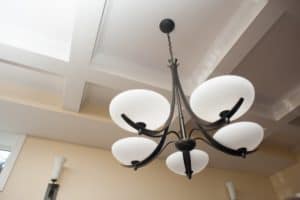By Kaitlin Krull
Going green at home can seem like an expensive, drawn-out process to many homeowners. Thankfully, transforming your home into an eco friendly space doesn’t necessarily mean splurging on solar panels and expensive sustainable gadgets. We at Modernize have come up with some smaller, budget friendly projects that will make your home greener in no time.
Programmable thermostats
With a straightforward installation process and a strong WiFi signal, you can change the way your home uses heating and air conditioning. A smart thermostat is a one-off investment that learns your heating preferences over a period of time and adjusts accordingly to save you energy and money. If this sounds like something that you can use in your home, the market is absolutely full of smart thermostat options. For a true American classic, choose the Honeywell Lyric, a nod to the traditional round thermostat they designed 60 years ago. Simply set up the thermostat, link it to an app on your smartphone or tablet, and monitor, adjust, and track your energy usage on the go.
 Alternative lighting
Alternative lighting
If you haven’t already made the switch to energy saving light bulbs, you could be wasting more money and electricity than you think. LEDs and CFL light bulbs use far less energy than traditional halogen bulbs (and the latter are being phased out worldwide, so the switch will be easy to make at home). With minimum effort, you can maximize your energy savings throughout the house. If you want to take your green lighting solution even further, consider investing in smart light bulb systems that are linked via WiFi to each other and a clever home automation system. Like smart thermostats, smart lighting units can be monitored and adjusted online and will make your home more high tech and eco friendly at the same time.
Solar light tubes
Want to add a natural light source to your home but don’t have the budget for skylights and floor to ceiling windows? Consider installing solar light tubes to maximize daylight. This works perfectly in smaller rooms and for customers with smaller wallets. Although this process will require professional installation, the whole project only takes a few hours and requires no structural changes to your roof. The best part is that you will see the benefits of this renewable source of energy immediately: more light and lower energy bills.
Indoor gardens
For the green thumbed homeowners out there, an indoor kitchen garden is a simple way to decrease grocery costs and increase self-sufficiency at home. This project is entirely do-it-yourself and is as big as you make it. Start small with potted plants on a windowsill, in a raised bed, or hung vertically on your kitchen or dining room walls. Stock your indoor garden with the herbs, fruits, and vegetables you use most often at home, and you might just be able to skip your trip to the farm shop or supermarket produce aisles after your garden has developed and grown. At the very least, you will have a creative space in your home that you’ve cultivated entirely yourself.
 Upcycled furniture and decor
Upcycled furniture and decor
Most people think that going green is all about solar power and reducing energy costs. While these parts of eco-friendly living are important, of course, there are other ways to reduce your carbon footprint at home. Repurposing and reusing furniture and decorative accessories, either that you used previously in your own home or picked up at garage sales and flea markets, is a fantastic way to recycle materials instead of throwing them away. Take your upcycling project one step further by sourcing reclaimed wood and other building materials to make your own furniture. Dining tables and beds are particularly popular among DIY savvy homeowners, so choose your materials and let your imagination go wild.








